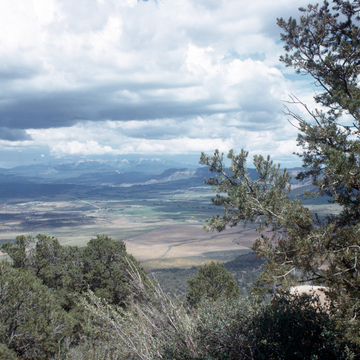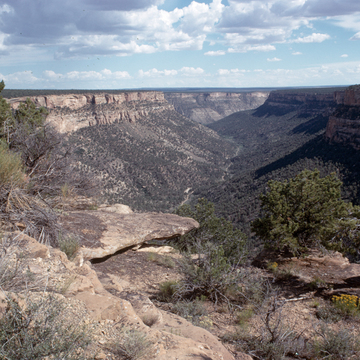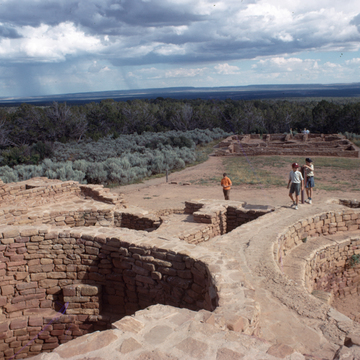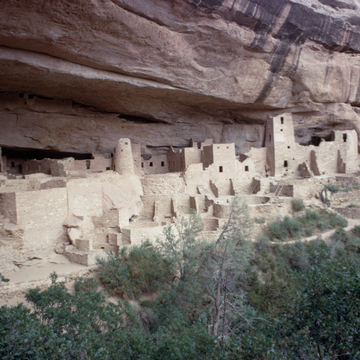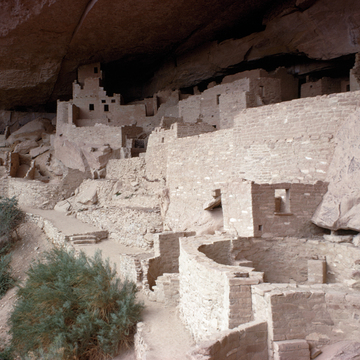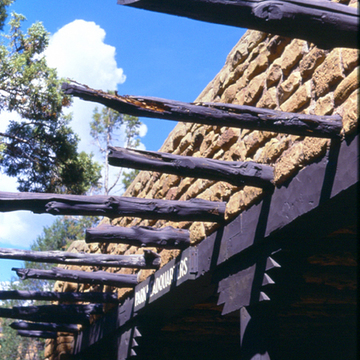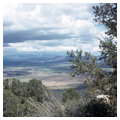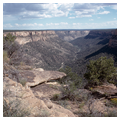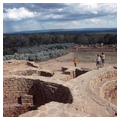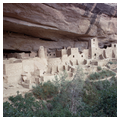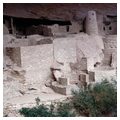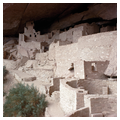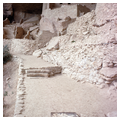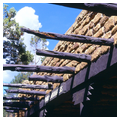Jesse Nusbaum, the son of a pioneer bricklayer in Greeley, was the superintendent of Mesa Verde National Park during much of the 1920s, 1930s, and 1940s. He became an exponent of the Pueblo Revival style after working with Mary Coulter, an architect who designed restaurants and hotels for the Santa Fe Railroad. Nusbaum also consulted with his friend, the Santa Fe architect John Gaw Meem, before designing much of the headquarters complex. Nusbaum was an archaeologist and amateur architect who earlier worked with Meem in Santa Fe, where Meem's projects included the restoration of the Palace of the Governors and the design of the Santa Fe Art Museum. At Mesa Verde, Nusbaum, with some assistance from his wife, Eileen, made rough designs for headquarters buildings which were refined by park service architects.
The Nusbaums initially lived in a tent while supervising Navajo Indians who constructed many of the park facilities. Navajos, who still do much of the work in the park, also built for themselves seven rock hogans and a sweat lodge, off limits to visitors. Also off limits is one of the least altered Nusbaum buildings, the 1930s ranger dormitory, now the park research library.
Jesse Nusbaum interested John D. Rockefeller, Jr., in financing extensive digs at key sites around the park, although a great many remain unexplored. Even after leaving Mesa Verde to direct the Laboratory of Anthropology in Santa Fe, Nusbaum continued to review construction drawings for additions and alterations to the Mesa Verde complex. The result is a headquarters complex of consistently fine Pueblo Revival buildings that represent the first National Park Service use of indigenous architecture. During a period when native culture was still little respected and the Pueblo Revival style was just coming to be appreciated, Mesa Verde introduced the style to millions of park visitors.
Nusbaum's elegant, horizontal structures mirror the natural forms of the mesa country as well as the prehistoric ruins. Native sandstone wall courses have flush mud mortar that gives the 18-inch thick, battered walls a smooth appearance. The load-bearing walls support peeled log vigas which project through the masonry to the exterior. The vigas on the interior support half-round sapling or split wood slats (latías: Spanish, little legs). Low, irregular parapets edge the flat roofs. Adz marks texture exterior door and window wood-work. Interiors have distinctive plaster walls, sandstone floors, bancos (built-in benches), and corner fireplaces.
Sensitive landscaping with local sandstone walks and native plants (piñon pine, rabbitbrush, yucca, gambel oak, Indian paintbrush) integrates the park buildings into the scene without jarring visitors from their contemplation of prehistoric marvels. Frederick Law Olmsted, Jr., on a 1924 tour, called














